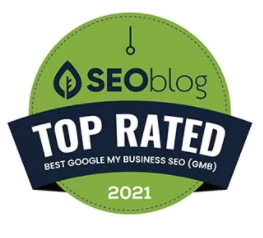Since search engine optimization (SEO) is valuable as a marketing strategy, it makes sense to invest as much time and resources into it as possible. However, for small and mid-size businesses, it may be necessary to trim their marketing budgets to ensure a more robust bottom line. So, that begs the question – how can a company cut costs without sacrificing SEO quality?
Fortunately, there are ten unique ways to do this, so let’s outline them here.
#1: Dial in Your Budget
One of the main problems businesses have with their marketing budgets is that they’re not sure how much they’re really spending. While certain line items like PPC ads and software subscriptions are easy to track, it’s much trickier to figure out other costs like labor, equipment, and other resources used.
So, the first step to ensure you’re cutting costs is to calculate how much you’re really spending on SEO. Without this number, how can you be sure what to cut or how much you’ll save in the process? In many cases, the upfront cost of optimizing a website is high, while the ongoing maintenance cost is far lower.
It’s also important to break down your budget by categories and percentages. For example, how much of your budget will be subscriptions versus labor costs? While there isn’t a “right” answer for how much you should spend on any element, it’s easier to see where you can make cuts once you break down the total percentage.
In some cases, you may also be able to cut costs by switching to lower-priced alternatives. For example, if you’re spending a lot on managed SEO services, you could save money by signing up with a more affordable agency like BizIQ. That alone might be enough to downsize your budget, especially considering how many tools and services you can bundle in the process.
#2: Assess Your ROIs
Once you know all the elements of your SEO strategy, you can calculate your ROIs for each. This way, you can cut those components that cost more money than they bring in, and you might wind up solvent as a result.
Calculating your ROIs can be challenging, depending on what you’re doing. For example, if you have someone in-house spending hours on social media engaging with followers, how can you measure the success or failure of that effort?
As a general rule, to figure out your ROI, you need to know how many sales are generated by a specific item. Then, you can subtract the cost from the money earned and get the return. While this process can be complicated for some line items, it’s worth the time and energy required because it will give you a clearer picture of how to cut costs within your marketing budget.
#3: Bundle Tools and Software
Another primary problem that many companies encounter is using too many programs and tools to achieve their various SEO goals. While there will be at least a few silos within the extended framework of your marketing strategy, you want to eliminate as many of them as possible.
Even if these programs are free, the more you use them, the more time and energy are required to incorporate them into your marketing. Basically, if someone has to log in and out of multiple programs to manage various tasks, it will take far longer to complete those tasks than if they could handle everything from a single dashboard.
Here is also where investing in an all-in-one marketing agency can help trim the fat from your budget. Since an agency can handle all the internal details regarding your SEO, you don’t have to worry as much about silos and time wasted on multiple programs. Instead, you pay a flat rate monthly and watch your SEO improve accordingly.
#4: Focus on Efficiency
Typically, if you want to streamline your operations, you need to generate a list of steps to accomplish a specific task. By breaking down the process into individual steps, you can determine where to make adjustments, so the process runs much smoother and takes less time to complete.
That said, avoiding using efficiency to cut valuable processes from your marketing strategy is imperative. Sometimes, the most time-consuming steps offer the most value and the highest return, so trimming them would actually hurt your brand in the long run. Instead, it’s better to focus on redundancies and eliminate them as necessary.
Also, remember that shaving off inefficient methods will likely take a few refinements. During the first round, you can cut any steps that seem unnecessary or substantially time-consuming. Then, you want to see how well those cuts improved efficiency and start the process again. During the second round, you may discover that the first changes eliminated the need for other steps, or some cuts may have created more work unintentionally.
#5: Utilize Free Tools Whenever Possible
Thankfully, tons of SEO tools and software are available to help you reach a wide array of marketing goals. Even better, many of these programs are free or have a free version available.
That said, you won’t usually get the best results with a free program, but it can work well as a placeholder until your budget allows for high-end software. Also, it’s generally better to pay for a program that can streamline your SEO tasks instead of using multiple free apps that add redundancies or mistakes.
Another point to consider is creating a freemium account with a specific program, then upgrading when your budget allows. This way, you can still use the same software and user interface but get better or more comprehensive results.
#6: Target Fewer Keywords
If you’re trying to optimize for many different primary keywords, there’s a lot more work involved for audits, updates, and refinement. Each new keyword requires additional help, increasing your labor costs and ad spending.
So, one of the easiest ways to cut costs within your SEO budget is to focus your money on the strongest keywords for your bottom line. Sometimes, those may be the keywords with the highest traffic volume. However, you must also pay attention to click-through and conversion rates to ensure you’re sticking with the words with the highest ROI.
Refining your keyword research can also help you improve your pay-per-click (PPC) ads if you’re still running them. As a rule, it’s best to pay for ads that move the needle and cut those that don’t add sales to your bottom line. As with everything else, there’s a big difference between value and cost, so don’t conflate the two and assume the elements with the highest costs need to be cut. In some cases, it’s better to pay extra for a high-value marketing element and remove multiple low-performing tactics to offset the price.
#7: Invest in Content Marketing
When it comes to SEO, content marketing is a great way to add more keywords to your arsenal and to show up on new search results. In many cases, a blog post or video may rank higher on a search than a service or landing page. Because content is valuable and relevant to the user, it’s easy to get engagement from visitors and boost a page’s profile within search results.
Best of all, content marketing doesn’t have to cost a fortune. Usually, blog posts are quick and affordable and can generate results faster than other forms of SEO. Plus, you can come up with outlines and topics well in advance to ensure you can keep the momentum working in your favor.
Also, feel free to go low-tech with video content. Viral marketing doesn’t necessarily need flashy elements or high-end equipment to generate results. In some cases, a video shot on a smartphone can get more hits and impressions than a professionally-edited clip that costs hundreds of dollars to produce.
#8: Make Long-term Plans for Budget Adjustments
Just because your budget is lean right now doesn’t mean it will be in a few years. While it’s tempting to start with all the different SEO tactics immediately, you may not be able to afford an SEO marketing blitz.
So, creating a long-term strategy allows you to take a step back and look at how your tactics will play out over time. You can also choose to hold off on some high-cost elements until your budget gets large enough to accommodate them.
If possible, it’s also wise to create “triggers” that indicate it’s time to increase the overall budget or splurge on a specific tactic. For example, once you reach 10,000 subscribers to your email list, you can send new types of content to your followers. This way, you can let your successes dictate when it’s time to move forward and start spending more money on marketing.
#9: Focus on Quality, Not Quantity
There’s a tendency in marketing to chase after the “latest” trends, and while there is value in that tactic, it can be a waste of time and resources. Instead, it’s often best to focus on high-quality posts and content that will always be useful and valuable to your target demographic.
Best of all, when you develop these pieces, you can re-release and update them regularly to keep them fresh and trending. For example, you could produce an e-book for your industry and then add new pages or chapters based on current events or emerging trends. It’s much cheaper to make an addendum than it is to create an entirely new book from scratch.
Overall, comprehensive “evergreen” content will steadily improve your SEO strategy with minimal maintenance costs. Although they can cost more upfront, they’ll pay off substantial dividends over the long term.
#10: Utilize Social Media More
Social media marketing has long been one of the best ways to build a stronger ROI because these platforms are free to join and use. Sites like Facebook, Instagram, and TikTok have allowed businesses of all sizes to find and connect with their target audiences without spending a fortune for the privilege.
While social media channels are not always SEO-related, you can still optimize your posts and social content to send traffic to your main site. Plus, in some cases, your social profiles may be the first pages that pop up in search results, so following the same SEO tactics as you would on your website is imperative.
As with organic SEO services, it can take a while for social sites to generate a ton of buzz. However, if you’re looking at long-term goals, waiting a few months doesn’t seem bad when considering a 10-year marketing strategy.
Get High-Quality SEO Without Spending a Fortune with BizIQ
Suppose you’re trying to cut down your marketing budget. In that case, you can tirelessly work on each of the strategies on this list or outsource the work to a professional SEO marketing agency like BizIQ. At BizIQ, we’re more affordable than other agencies because we know how to work efficiently to deliver better results.
Also, since you’re outsourcing the work to us, you can choose a package that’s right for your needs right now. Plus, you can customize and upgrade your plan later once you’re earning more money and can afford to dedicate more toward optimization. Contact our team today if you’re ready to see what plans we offer!










